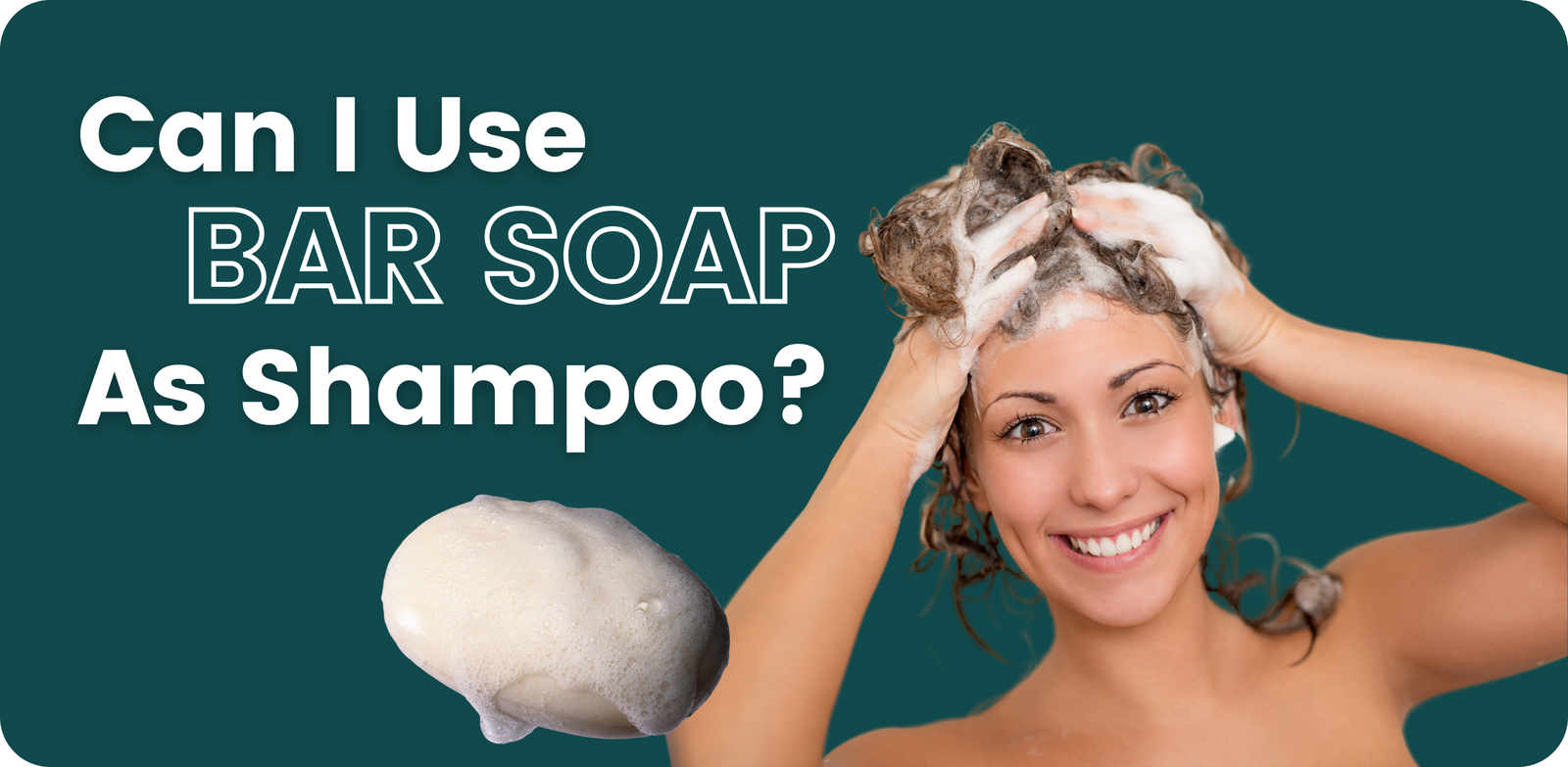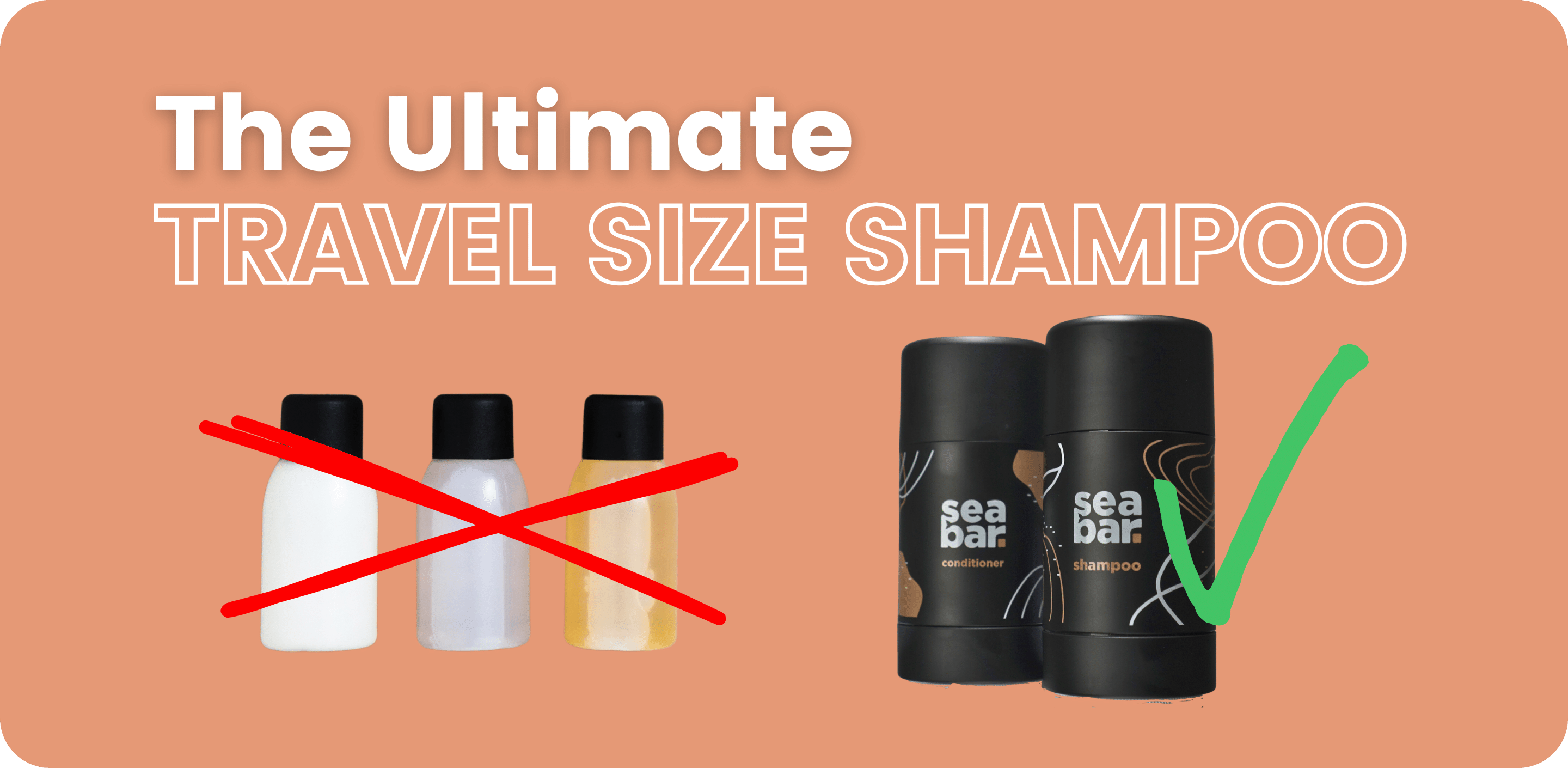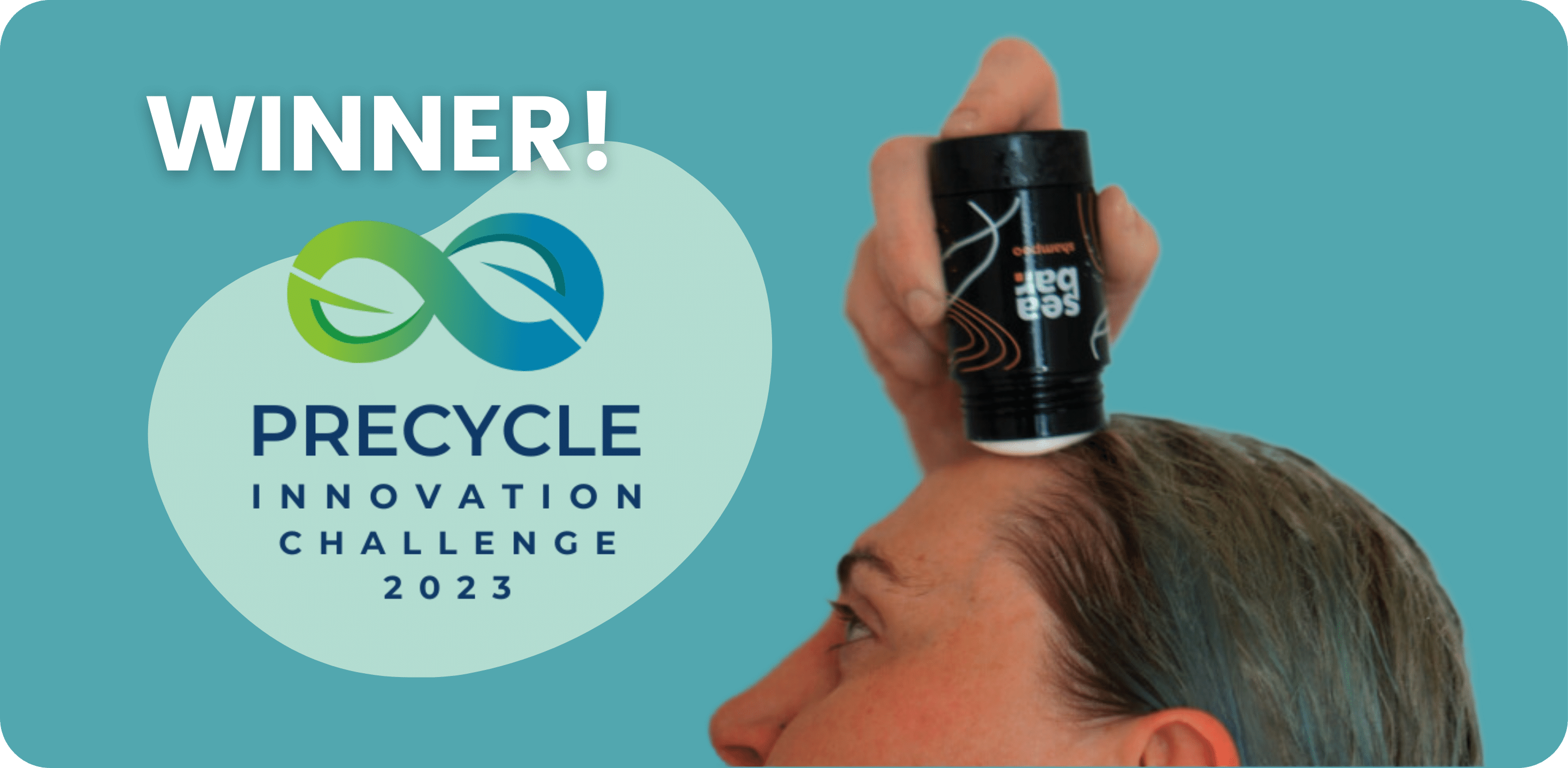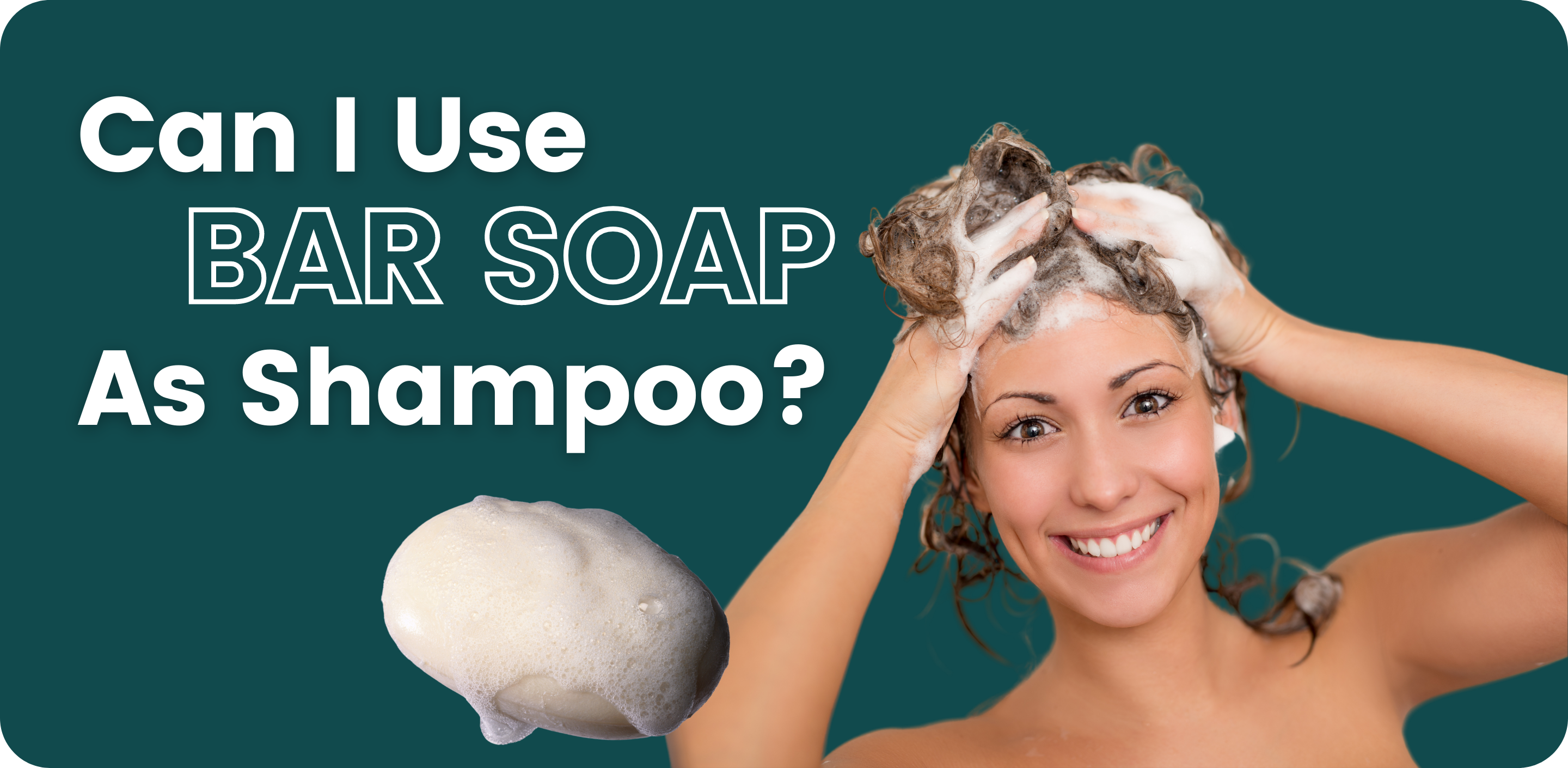Can I Use Bar Soap As Shampoo?

The short answer is yes.
The longer answer; you shouldn't if you care about your hair.
As tempting as it may be to use your bar soap from head to toe there are a few of reasons why you'll want to resist.
The rising popularity of bar shampoos confuse the issue further by looking nearly identical to your bar soap, but there are actually several important differences that will make a noticeable difference to your hair.
Why do we need shampoo?

If you've ever put oil in water you will know that oil and water don't mix. The oil floats to the surface and forms droplets of oil, when two droplets come near each other they merge forming a larger droplet.
This happens because oil is non polar, while water is polar with a positive side and negative side like a magnet. The water molecules are attracted to each other, ignoring the poor oil molecules like the awkward kid .
Because the water is busy being attracted to itself, it forces the oil molecules to hangout together isolated from the water.
Soap works by surrounding those oil droplets in a layer of the polarized fat molecules with the water loving tail facing outward towards the water. This allows the oil to wash away in water.
Outside of the whole washing away germs thing, making oil wash away in water is the primary reason we use soap.
But your shampoo isn't soap. While shampoo and a bar of soap do essentially the same thing, allowing soap to wash away in water, bar soap and shampoo are not the same.
What is the difference between bar soap and shampoo?

Your shampoo isn't soap.
Yep, most likely your shampoo isn’t actually soap. Most shampoos are actually
synthetic detergents also known as surfactants.
Soaps have been made since at least 2800 BC [1] and are made by combining oils like beef tallow or vegetable oils like coconut oil or palm oil with a strong base, most commonly Lye (sodium hydroxide) in a process called saponification. Saponificaton modifies the oil's long carbon chains by adding a polar atom at one end.
Because the natural soap making process uses Lye, a very strong base, that means your soap is a base with a pH of between 8 and 10.
Your hair on the other hand has a pH of between 3.5 and 5.5.
Now imagine the baking soda and vinegar volcano you made in elementary school...
The same thing is happening on a micro scale every time you wash your hair with soap.
Surfactants on the other hand are a much more recent development. Forced by shortages of oils for soap making in WWI scientists began experimenting with other ways to make soap. By the 1930s chemists had begun developing a wide variety of surfactants with unique benefits that make them more suitable for some uses than soap. For example surfactants can have pH levels closely matching that of hair which reduces damage.
Today most of the liquid shampoo you find on the market use these surfactants, however a growing number of high quality shampoo bars are being made with modern surfactants to help combat the plastic epidemic.
Bar soap damages your hair

Each time you use bar soap as shampoo you are doing damage, and unlike the rest of your body, damage to your hair cannot be healed.
Remember the baking soda volcano thing... that violent chemical reaction damages your hair.
From the moment your hair grows out of your scalp it begins slowly breaking down. That means that preventing damage is one of the most important parts of a good hair care routine, and the longer your hair is the more important it becomes.
Human hair grows about half an inch a month. If your hair is 6 inches long that means the ends have been around for a year and the damage begins to add up.
Bar soap has no conditioning agents
When you wash your hair with bar soap you also are missing out on a number of conditioning agents and additives shampoo makers use to help maintain healthy hair. Additives like proteins to moisturize and strengthen hair. Shea butter which conditions your hair reducing friction, and damage, and making your hair soft. Panthanol which is great for your scalp and attracts water to your hair to maintain moisture. These additives are fairly expensive and are more beneficial to your hair than your skin so they aren't added to the typically much cheaper bar soaps.
Bar soap makes your hair rough

There is something satisfying about running your fingers through soft hair. One of the biggest factors in your hair feeling soft is the cuticle layer of your hair laying flat. Every hair follicle has a layer of scale-like proteins on the outside of each hair strand called the cutical. The scales on the cuticle layer raises up when the pH is high, and lay flat when the pH is lower... yet another reason pH makes using bar soap as shampoo less than ideal.
Bar soap causes scummy buildup
If you have hard water using bar soap as shampoo regularly can cause a waxy residue to build up in your hair. Hard water occurs when there is higher concentrations of calcium in your water source. The calcium is harmless to humans, but the oils from your body, soap, and calcium in your water combine to form soap scum. Over time these deposits can harden (it can happen on your hair too).
If you are already experiencing buildup these deposits can be removed with an apple cider vinegar rinse.
Not all shampoo is created equal
There are hundreds of options for shampoo, and just because it's a liquid shampoo doesn't make it automatically great for your hair.
Many commercial shampoos contain harsh surfactants like SLS, also known as sodium lauryl sulfate. These harsh detergents are often used because they are very cheap and do a very good (often too good) a job at removing oils. This can often lead to damaged hair and unpleasant scalp conditions like a dry scalp.
Another major problem with most commercial shampoos is that most come as a liquid. Typical liquid shampoo is made with 75-80% water. Which for a product designed to be used on wet hair in a shower this is extremely unnecessary, increasing both your carbon footprint and your plastic footprint.
A growing number of consumers are switching from their liquid products to solid bar shampoos. Shampoo bars are made from the same ingredients as a regular shampoo, just with much less waste.
Most surfactants come from the factory in a solid form, and are diluted by commercial shampoo manufacturers to make your bottle of shampoo appear larger and more valuable than they it really is.
The costs of using bar soap as shampoo outweigh the benefits... in fact I generally use my SeaBar shampoo bar from head to toe. Though I may be more than slightly biased.
If you are ready to upgrade your hair care, and reduce your plastic footprint at the same time check out SeaBar shampoo and conditioner bars. Our salon quality shampoo bar formulas are color safe, cruelty free, and great for every hair type. And our conditioner bar will leave your hair feeling softer than you've ever felt before, all while helping you to eliminate the pesky disposable plastic bottles of shampoo from your shower.
Give SeaBar Shampoo a try today.

[1] Willcox, Michael (2000). "Soap". In Hilda Butler (ed.). Poucher's Perfumes, Cosmetics and Soaps (10th ed.). Dordrecht: Kluwer Academic Publishers. p. 453. ISBN 978-0-7514-0479-1. Archived from the original on 2016-08-20. The earliest recorded evidence of the production of soap-like materials dates back to around 2800 BCE in ancient Babylon.






